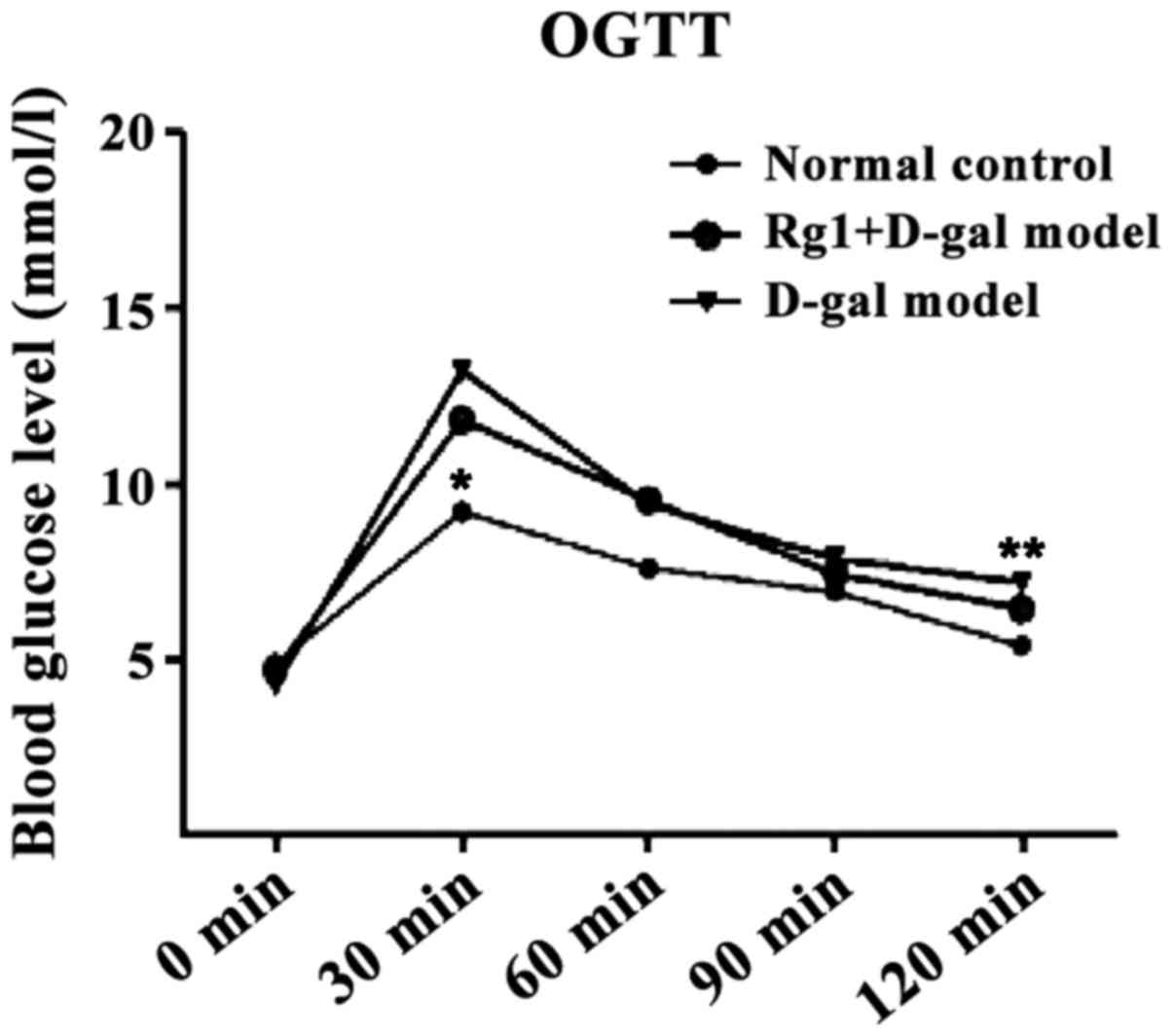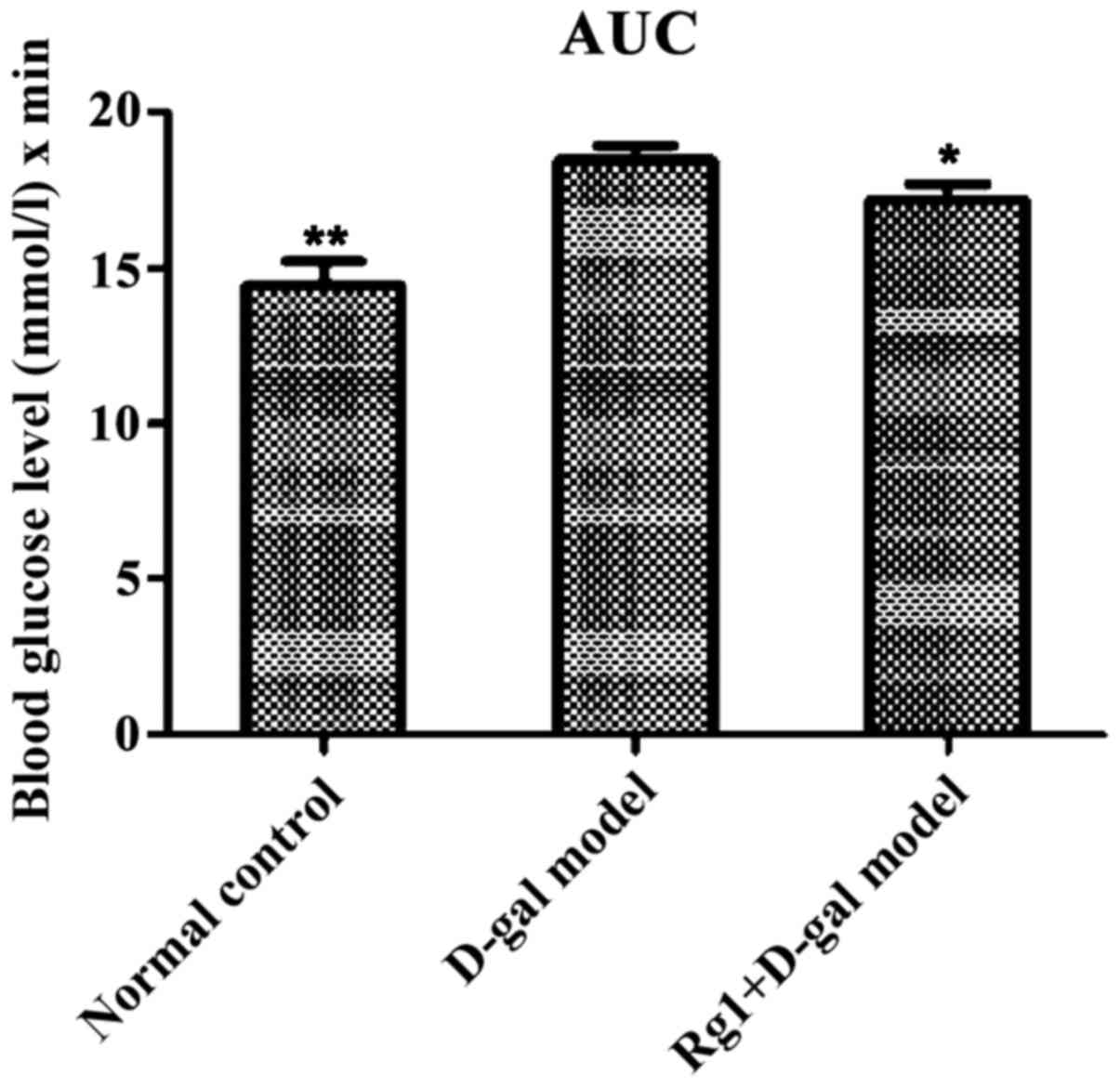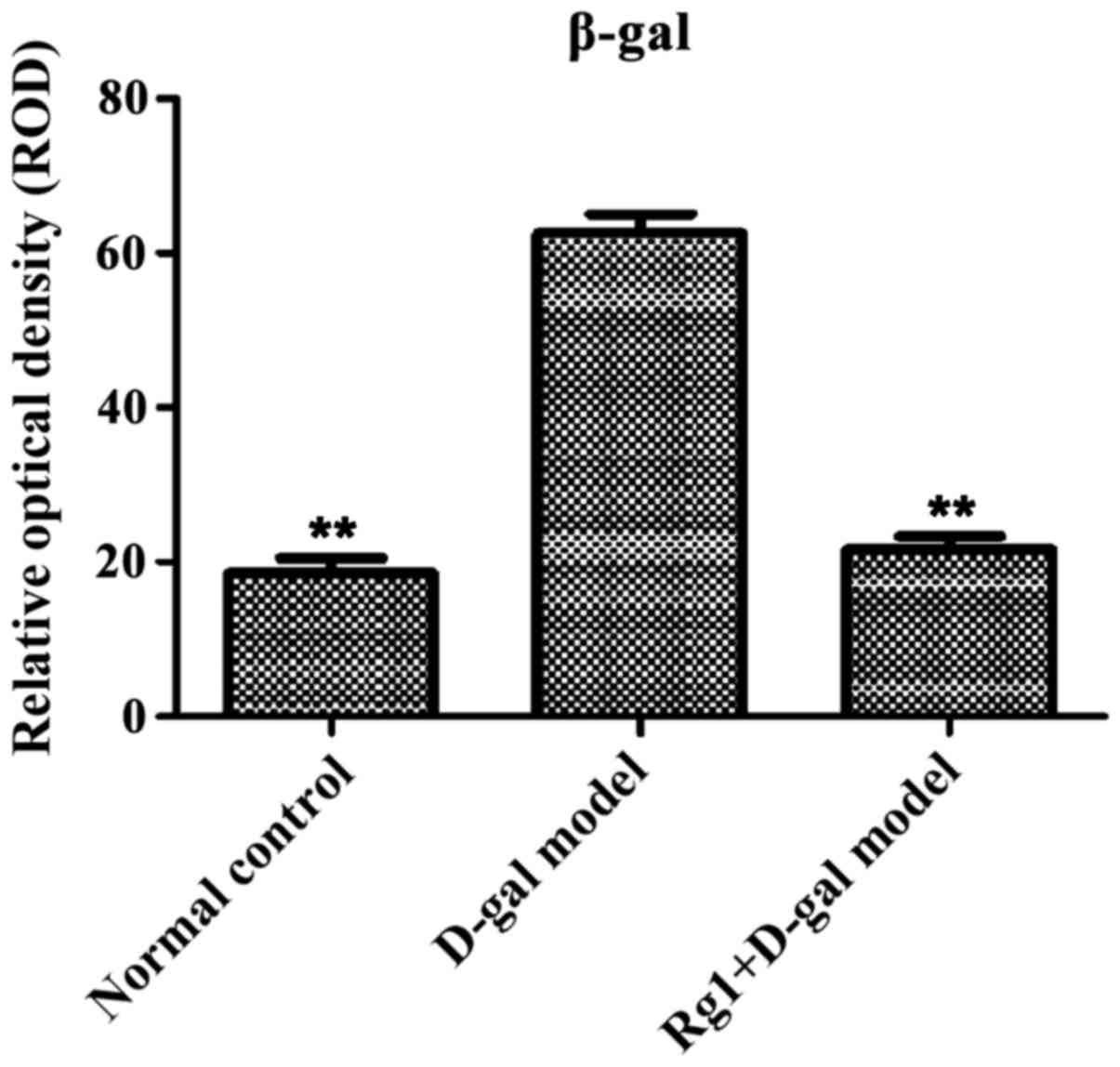The protective effect of Ginsenoside Rg1 on aging mouse pancreas damage induced by D-galactose
- Authors:
- Published online on: May 25, 2017 https://doi.org/10.3892/etm.2017.4514
- Pages: 616-622
-
Copyright: © Dong et al. This is an open access article distributed under the terms of Creative Commons Attribution License.
Metrics:
Total
Views: 0 (Spandidos Publications: | PMC Statistics:
)
Total PDF Downloads: 0 (Spandidos Publications: | PMC Statistics:
)
Abstract
The protective effect and mechanism of Ginsenoside Rg1 on aging mouse pancreas damaged by D‑galactose (D‑gal)‑induced was studied. Two-month-old male C57BL/6J mice were randomly divided into three groups of 10 mice per group. The D‑gal group of mice received hypodermic injection of D‑gal (120 mg/kg/day) for 42 days; the Rg1+D‑gal group of mice receiving D‑gal + intraperitoneal injection Rg1 (40 mg/kg/day) for 27 days from the 16th day of D‑gal replication; and the naïve group that constituted the normal control mice receiving the same dose of saline instead of the drug. The related indicators were tested on the second day after modeling and administration. Fasting blood glucose (FBG), oral glucose tolerance test (OGTT) and fasting insulin level were measured by taking peripheral blood. Samples of pancreas were weighed and visceral index was calculated. Paraffin sections were prepared. H&E staining sections were produced to observe pancreatic tissue morphology. Immunohistochemical staining was used to observe advanced glycation end products (AGEs) and integral optical density (IOD) of stained positive tissue in pancreas. Ultrathin slices were used to observe ultrastructural change of pancreatic tissue. Frozen sections were prepared to test the relative optical density of positive cells that were stained by senescence‑associated β‑galactosidase (SA‑β‑gal) in pancreatic tissue. Superoxide dismutase (SOD), malonaldehyde (MDA) and total antioxidant capacity (T‑AOC) were detected by preparing pancreas tissue homogenates. Compared with the control group, Rg1+D‑gal mice had significantly decreased pancreatic wet weight and visceral index and significantly lower FBG; OGTT for 30 and 120 min. There was no significant difference of the blood sugar level between the groups. The area under the curve and the number and size of the nucleated cells within islet were markedly reduced. In addition, SA‑β‑gal‑positive particles in pancreas tissue intracytoplasmic cells significantly decreased and relative optical density also reduced. The IOD of AGEs in pancreas tissue and MDA content decreased. SOD and T‑AOC activity significantly increased. Ginsenoside Rg1 can be effective antagonistic structure and function of the pancreas injury induced by D‑gal. The mechanism may be associated with reducing oxidative damage.






















